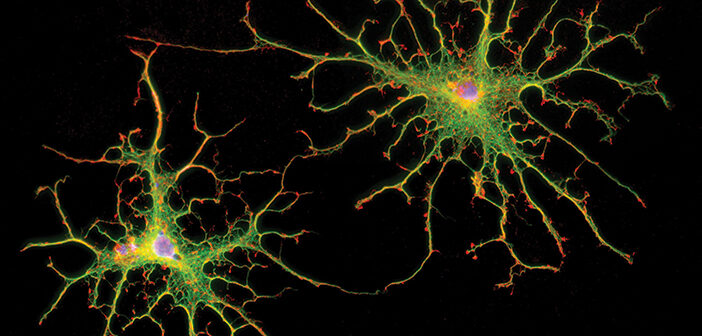Scientists devise method to identify critical cell types in the brain.
Pity the glia. One of just two types of cells that compose our brains, they tend to receive far less attention for their importance in brain function and disease than the more celebrated neurons.
Scientists have known for more than a century that certain glial cells are integral components of neuromuscular synapses—but they couldn’t distinguish the specific glia at those junctions from the diverse overall population of glial cells. This has been a major challenge in promoting and restoring the normal function of the nervous system following injuries and diseases, and in old age. A new finding may change that.
Researchers led by Gregorio Valdez, PhD, the GLF Translational Associate Professor of Molecular Biology, Cell Biology, and Biochemistry, identified two important molecules to study and manipulate Schwann cells, a subtype of glia located at neuromuscular synapses. In their June paper in eLife, the team wrote that Schwann cells are the only cells in muscles expressing those two molecules. These molecular markers provide a highly specific glial “bar code,” Valdez says, that identifies the vital cell subtype.
“What this means is that we can finally figure out how all three cellular constituents of the synapse—neurons, muscle, and glia—talk to each other,” he says. “We now have a unique and important tool for identifying this critical component of the synapse. This is essential for knowing when and where to target to ensure synapses function appropriately.”
Valdez says the glial bar code will pave the way for future studies, including on neuromuscular diseases, such as amyotrophic lateral sclerosis and spinal muscular atrophy.
“While our primary focus was the neuromuscular synapse, we also gathered initial evidence indicating that synaptic glial cells in the brain can be labeled and targeted using the same approach,” he adds. “If true, this discovery could be of immense consequence for treating a myriad of brain conditions, including those involving cognitive decline due to normal aging and Alzheimer’s disease.”




